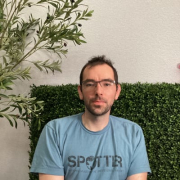

Splunk Enterprise Security and Google Security Operations compete in cybersecurity solutions. Google Security Operations has an edge in real-time threat prevention using machine learning, while Splunk focuses on customizable analytics and threat detection.
Features: Splunk Enterprise Security is known for robust analytics, customizable dashboards, and extensive app integrations. It provides insightful threat intelligence and adapts to various environments. Google Security Operations leverages integration within the Google ecosystem, utilizing advanced AI for threat detection and offering automated responses, emphasizing real-time threat prevention and AI-driven automation.
Room for Improvement: Splunk Enterprise Security could enhance its real-time threat prevention capabilities, simplify initial deployments, and reduce setup costs. It might also benefit from more intuitive user interfaces. Google Security Operations may improve its integration with non-Google apps, offer more granular customization options, and enhance detailed data analysis and threat correlation.
Ease of Deployment and Customer Service: Google Security Operations benefits from cloud-based deployment, offering flexibility and scalability with minimal setup complexity, supported by Google's robust resources. In contrast, Splunk requires a more extensive initial setup but is supported by a strong customer service infrastructure, providing detailed guidance and support throughout the implementation process.
Pricing and ROI: Splunk Enterprise Security entails a higher upfront cost due to its complex setup but offers significant long-term value through its comprehensive analytics capabilities. Google Security Operations has a more economical subscription-based pricing model, focusing on scalability and lower initial investment, making it appealing for businesses seeking cost-effective solutions with robust functionality.
| Product | Market Share (%) |
|---|---|
| Splunk Enterprise Security | 9.2% |
| Google Security Operations | 1.2% |
| Other | 89.6% |

| Company Size | Count |
|---|---|
| Small Business | 109 |
| Midsize Enterprise | 49 |
| Large Enterprise | 257 |
Google Security Operations provides advanced threat detection and response capabilities. Tailored for cybersecurity professionals, it integrates seamlessly with existing infrastructure, offering a proactive approach to managing security challenges.
Designed for enterprises requiring robust threat management, Google Security Operations harnesses the power of Google's infrastructure to deliver comprehensive insights into potential vulnerabilities and attack vectors. Leveraging AI and machine learning, users benefit from enhanced accuracy and speed in identifying threats, making it a crucial tool in maintaining cybersecurity resilience. Its adaptability allows businesses to customize security protocols, ensuring alignment with specific security strategies.
What are the most crucial features of Google Security Operations?
What benefits do users gain from Google Security Operations?
In industries like finance and healthcare, Google Security Operations is implemented to address specific regulatory and compliance requirements. Its adaptive features support cybersecurity frameworks, ensuring data protection and risk management standards are met effectively.
Splunk Enterprise Security delivers powerful log management, rapid searches, and intuitive dashboards, enhancing real-time analytics and security measures. Its advanced machine learning and wide system compatibility streamline threat detection and incident response across diverse IT environments.
Splunk Enterprise Security stands out in security operations with robust features like comprehensive threat intelligence and seamless data integration. Its real-time analytics and customizable queries enable proactive threat analysis and efficient incident response. Integration with multiple third-party feeds allows detailed threat correlation and streamlined data visualization. Users find the intuitive UI and broad compatibility support efficient threat detection while reducing false positives. Despite its strengths, areas such as visualization capabilities and integration processes with cloud environments need enhancement. Users face a high learning curve, and improvements in automation, AI, documentation, and training are desired to maximize its potential.
What Are the Key Features of Splunk Enterprise Security?In specific industries like finance and healthcare, Splunk Enterprise Security is instrumental for log aggregation, SIEM functionalities, and compliance monitoring. Companies leverage its capabilities for proactive threat analysis and response, ensuring comprehensive security monitoring and integration with various tools for heightened operational intelligence.
We monitor all Security Information and Event Management (SIEM) reviews to prevent fraudulent reviews and keep review quality high. We do not post reviews by company employees or direct competitors. We validate each review for authenticity via cross-reference with LinkedIn, and personal follow-up with the reviewer when necessary.